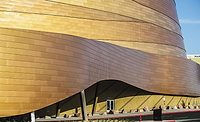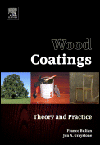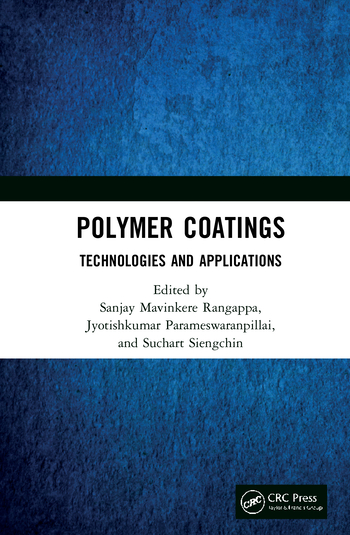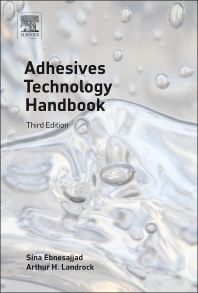OSU Pigment Discovery Expanding Into New Colors - Including Orange

Chemists at Oregon State University have discovered that the same crystal structure they identified two years ago to create what may be the world’s best blue pigment can also be used with different elements to create other colors.
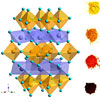
Chemists at Oregon State University have discovered that the same crystal structure they identified two years ago to create what may be the world’s best blue pigment can also be used with different elements to create other colors, with significant potential in the paint and pigment industries. First on the list, appropriately, is a brilliant orange pigment – appropriate for the OSU Beavers whose team colors are black and orange, and a university in a “Powered by Orange” advancement campaign.
But the broader potential for these pigments, researchers say, is the ability to tweak essentially the same chemical structure in slightly different ways to create a whole range of new colors in pigments that may be safer to produce, more durable and more environmentally benign than many of those that now exist.
Among the possibilities, they say, are colors that should be of interest to OSU’s athletic rival 40 miles down the road at the University of Oregon– yellow and green. “The basic crystal structure we’re using for these pigments was known before, but no one had ever considered using it for any commercial purpose, including pigments,” said Mas Subramanian, the Milton Harris Professor of Materials Science in the OSU Department of Chemistry.
“All of these colors should share the same characteristics of being extremely stable, durable, and resistant to heat and acid,” he said. “And they are based on the same crystal structure, so minor adjustments to the technology will produce very different colors and very high quality pigments.”
OSU has already applied for a patent on this technology, samples are now being tested by private industry, and the latest findings were published recently in Inorganic Chemistry, a journal of the American Chemical Society. The research has been supported by the National Science Foundation.
This invention evolved from what was essentially an accidental discovery in 2009 in an OSU lab, where Subramanian was exploring some manganese oxides for interesting electronic properties. At one stage of the process, when a sample had been heated to almost 2,000 degrees Fahrenheit, the compound turned a vivid blue. It was found that this chemistry had interesting properties that affects the absorption of light and, consequently, its color. So Subramanian and his research team, including OSU professor emeritus Art Sleight, quickly shifted their electronics research into what may become a revolution in the paint and pigment industry. Future applications may range from inkjet printers to automobiles or even ordinary house paint.
The work created, at first, a beautiful blue pigment, which had properties that had eluded humans for thousands of years, dating back to the Han dynasty in China, ancient Egyptians and Mayan culture. Most previous blue pigments had various problems with toxicity, durability and vulnerability to heat or acid. Some are carcinogenic, others emit cyanide.
Expanding that research, the scientists further studied this unusual “trigonal-bypyramidal coordination” of crystalline structure, atoms that are combined in a certain five-part coordinated network. The initial blue color in the pigment came from the manganese used in the compound. The scientists have now discovered that the same structure will produce other colors simply by substituting different elements.
“The new orange pigment is based on iron, and we might use copper and titanium for a green pigment,” Subramanian said. “Yellow and deep brown should be possible, and we should be able to make a new red pigment. A lot of red pigments are now made with cadmium and mercury, which can be toxic. These should all be very attractive for commercial use,” he said.
For more information, contact Mas Subramanian at 541/737.8235 or e-mail mas.subramanian@oregonstate.edu.
Image courtesy of Oregon State University.

Chemists at Oregon State University have discovered that the same crystal structure they identified two years ago to create what may be the world’s best blue pigment can also be used with different elements to create other colors, with significant potential in the paint and pigment industries. First on the list, appropriately, is a brilliant orange pigment – appropriate for the OSU Beavers whose team colors are black and orange, and a university in a “Powered by Orange” advancement campaign.
But the broader potential for these pigments, researchers say, is the ability to tweak essentially the same chemical structure in slightly different ways to create a whole range of new colors in pigments that may be safer to produce, more durable and more environmentally benign than many of those that now exist.
Among the possibilities, they say, are colors that should be of interest to OSU’s athletic rival 40 miles down the road at the University of Oregon– yellow and green. “The basic crystal structure we’re using for these pigments was known before, but no one had ever considered using it for any commercial purpose, including pigments,” said Mas Subramanian, the Milton Harris Professor of Materials Science in the OSU Department of Chemistry.
“All of these colors should share the same characteristics of being extremely stable, durable, and resistant to heat and acid,” he said. “And they are based on the same crystal structure, so minor adjustments to the technology will produce very different colors and very high quality pigments.”
OSU has already applied for a patent on this technology, samples are now being tested by private industry, and the latest findings were published recently in Inorganic Chemistry, a journal of the American Chemical Society. The research has been supported by the National Science Foundation.
This invention evolved from what was essentially an accidental discovery in 2009 in an OSU lab, where Subramanian was exploring some manganese oxides for interesting electronic properties. At one stage of the process, when a sample had been heated to almost 2,000 degrees Fahrenheit, the compound turned a vivid blue. It was found that this chemistry had interesting properties that affects the absorption of light and, consequently, its color. So Subramanian and his research team, including OSU professor emeritus Art Sleight, quickly shifted their electronics research into what may become a revolution in the paint and pigment industry. Future applications may range from inkjet printers to automobiles or even ordinary house paint.
The work created, at first, a beautiful blue pigment, which had properties that had eluded humans for thousands of years, dating back to the Han dynasty in China, ancient Egyptians and Mayan culture. Most previous blue pigments had various problems with toxicity, durability and vulnerability to heat or acid. Some are carcinogenic, others emit cyanide.
Expanding that research, the scientists further studied this unusual “trigonal-bypyramidal coordination” of crystalline structure, atoms that are combined in a certain five-part coordinated network. The initial blue color in the pigment came from the manganese used in the compound. The scientists have now discovered that the same structure will produce other colors simply by substituting different elements.
“The new orange pigment is based on iron, and we might use copper and titanium for a green pigment,” Subramanian said. “Yellow and deep brown should be possible, and we should be able to make a new red pigment. A lot of red pigments are now made with cadmium and mercury, which can be toxic. These should all be very attractive for commercial use,” he said.
For more information, contact Mas Subramanian at 541/737.8235 or e-mail mas.subramanian@oregonstate.edu.
Image courtesy of Oregon State University.
Looking for a reprint of this article?
From high-res PDFs to custom plaques, order your copy today!





